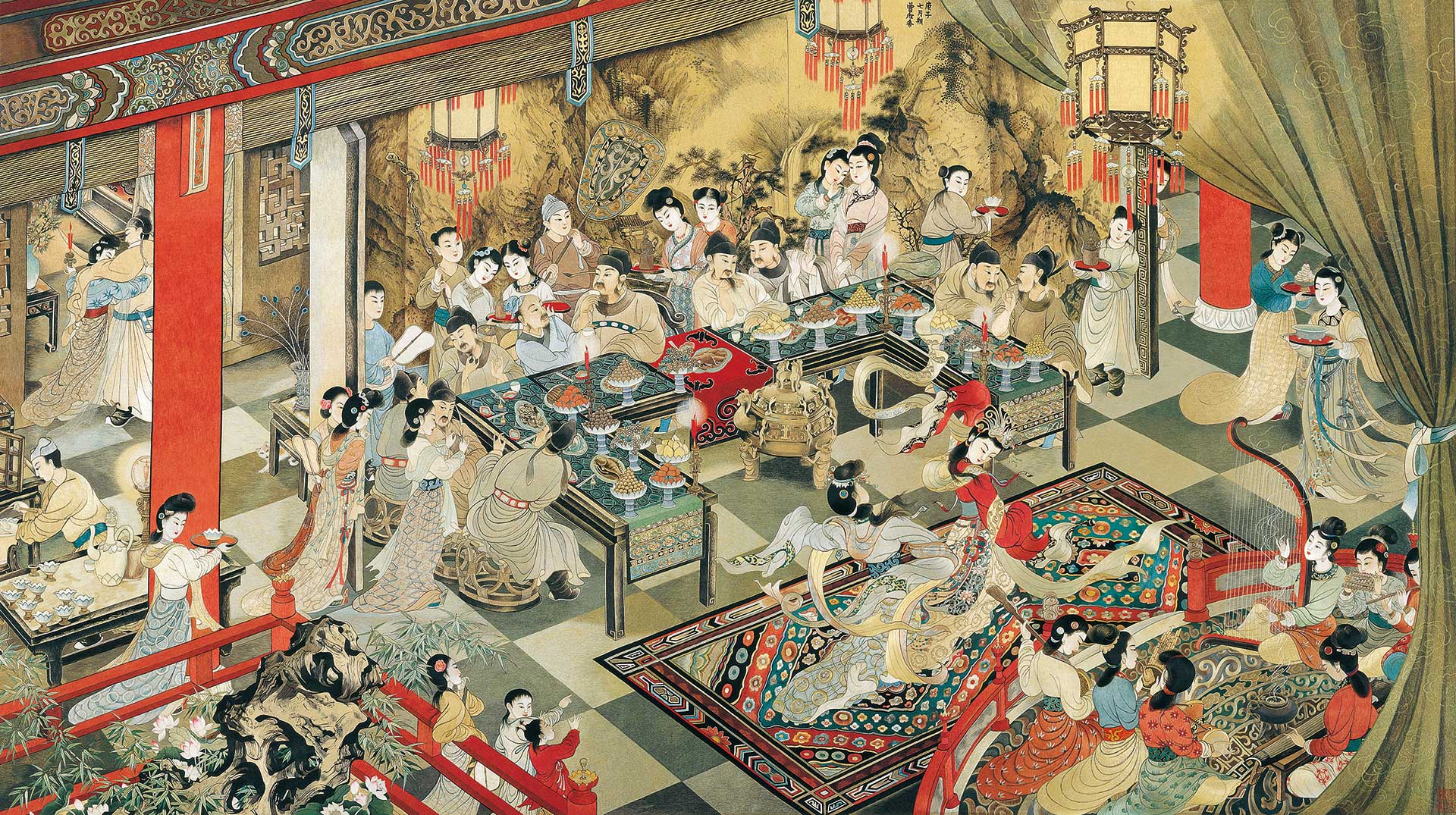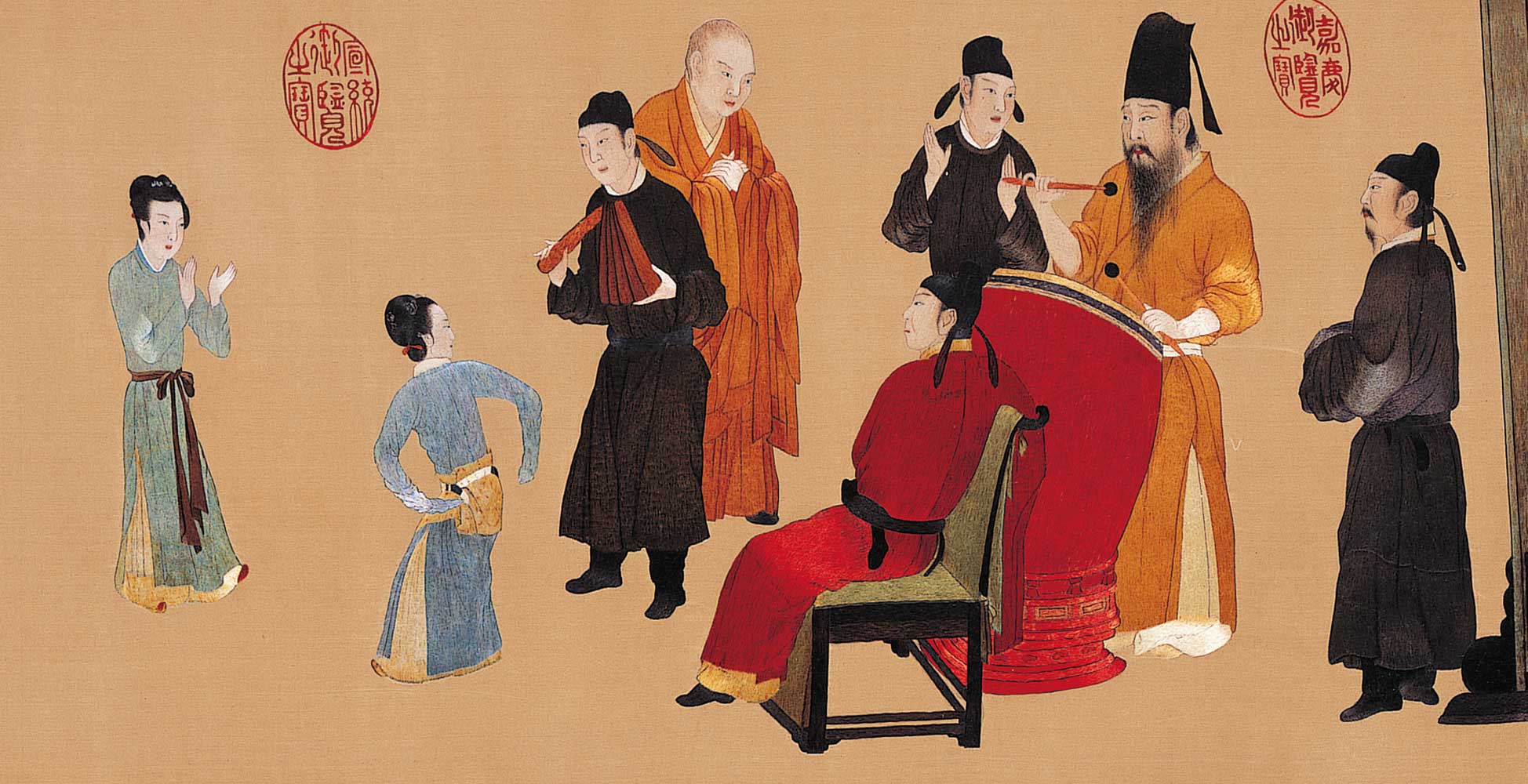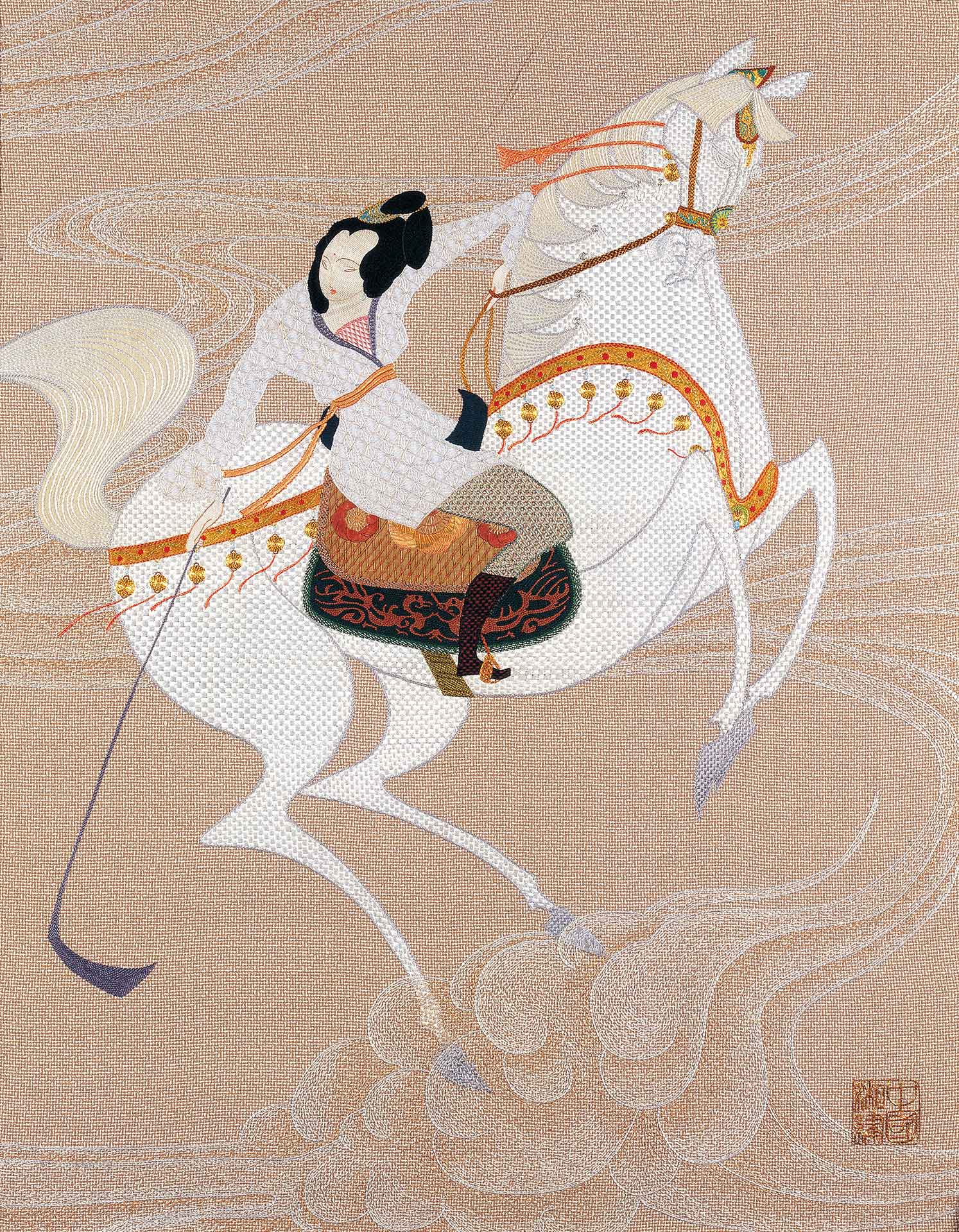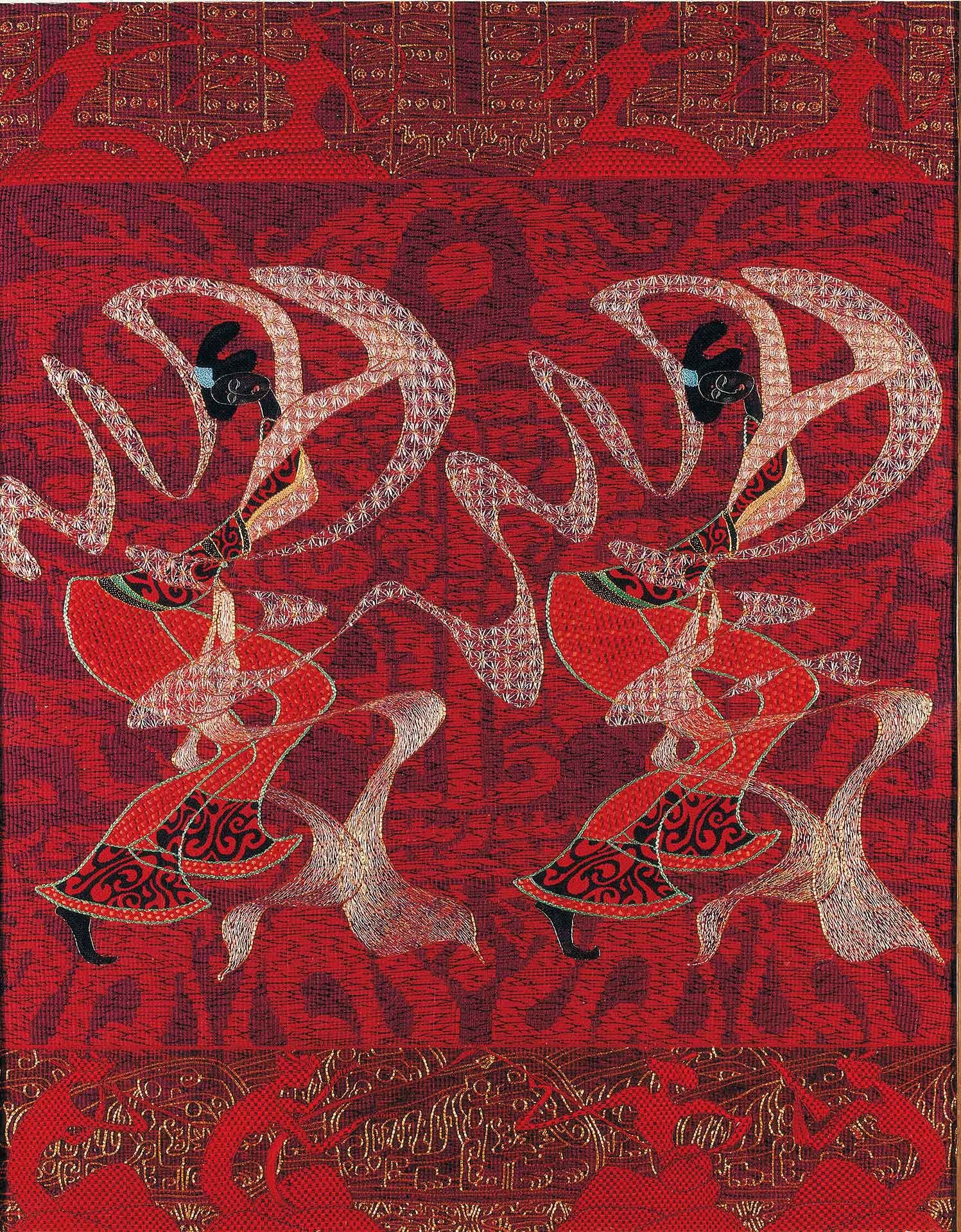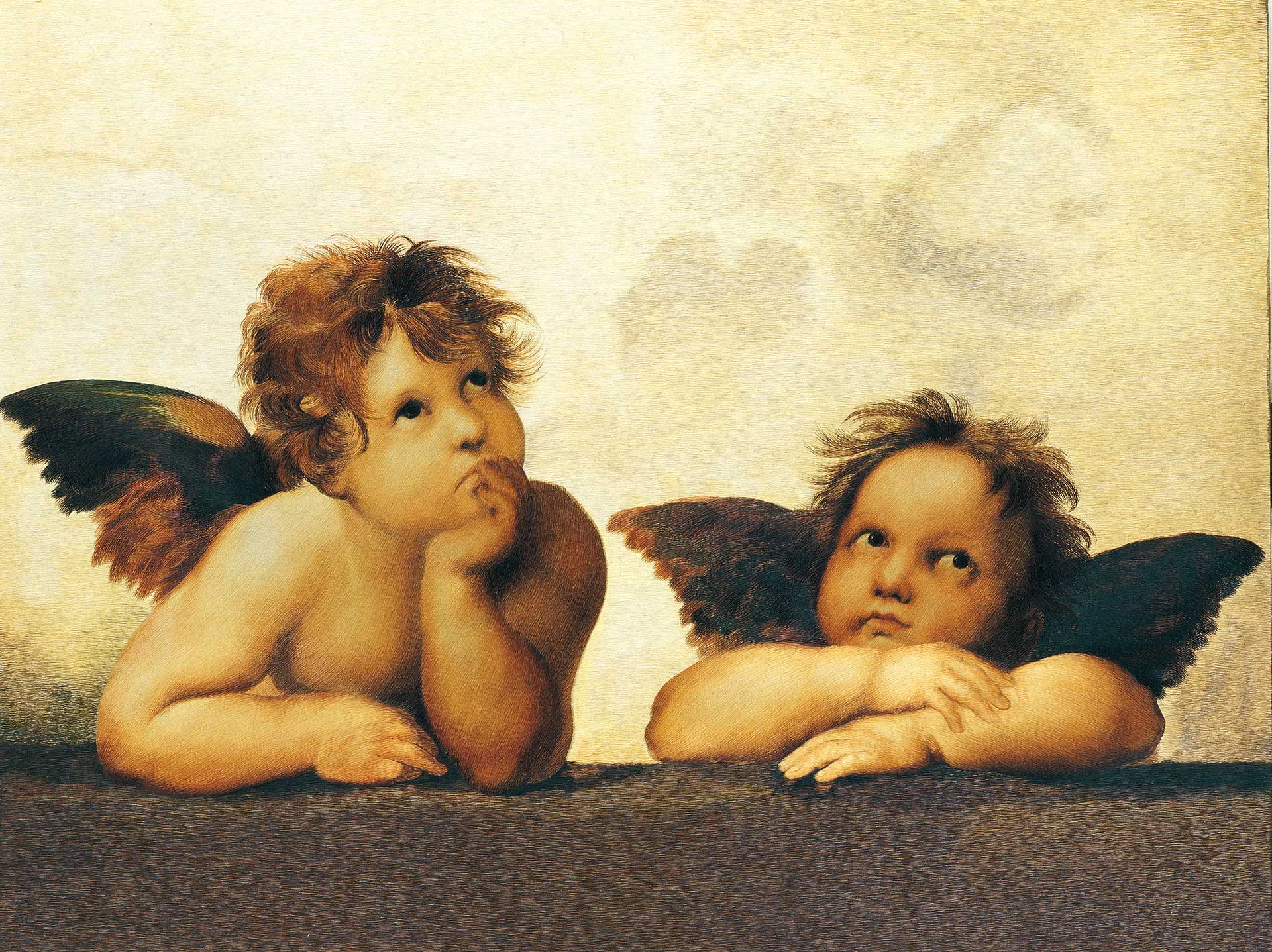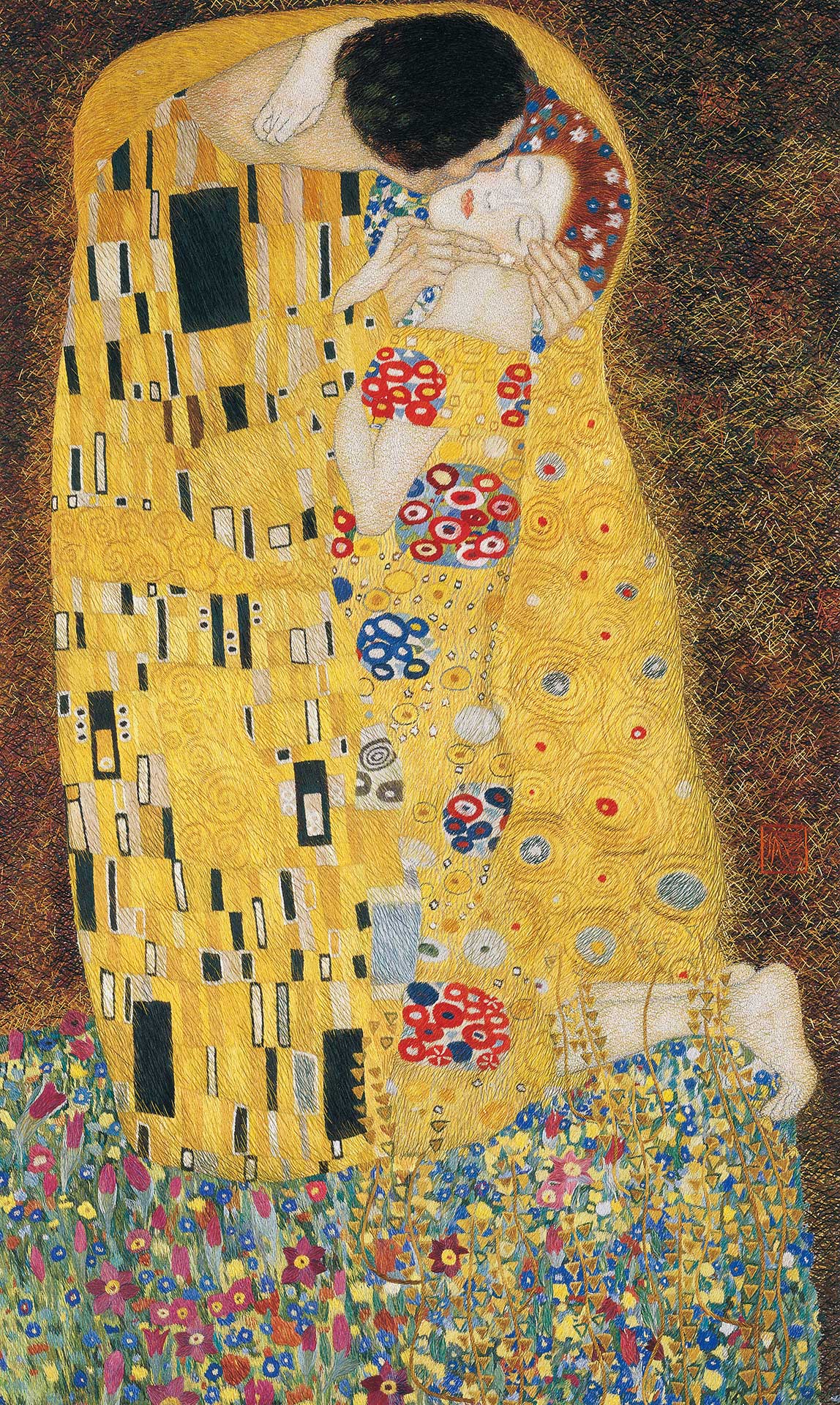Hong-Gah Museum collected over 500 pieces of the 1950s modern embroidery art, where artworks spanned across a great variety of embroidering techniques and forms, making them the most luxurious private collection among the Asia-Pacific area.
Embroidery art has its origin in practical life usages such as clothing and interior ornament etc. Clinging closely to the changing aesthetics throughout different eras, it has gradually paved its way into the room of delicate fine arts.
As Song Dynasty highly valued the scholarly and refined, cultivated tastes, painting embroideries that imitate calligraphies and paintings of famous scholars were hence well-received. Needles and threads were the brush pens and inks of the embroiderers, while they not only precisely represented the strikes and flows of the brush pens on paper, but also vividly illustrated the spirits of characters. Moreover, the silkiness and glossiness of the threads had added lifelike effects onto the tableaux.
Techniques and the art of embroidery culminated during the modern era when embroiderers managed to achieve major professional breakthroughs with the support of maturing technological, environmental, as well as material conditions. Highly developed techniques and embroiderment such as imitation embroidery, free stitch embroidery, double-sided embroidery, dual variant embroidery technique etc. flourished and thus cultivated an advanced embroidery industry. Continuous explorations and inheritance of skills and artistry had written down the most brightly-colored chapter in the history of Chinese arts and crafts.


